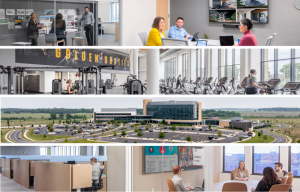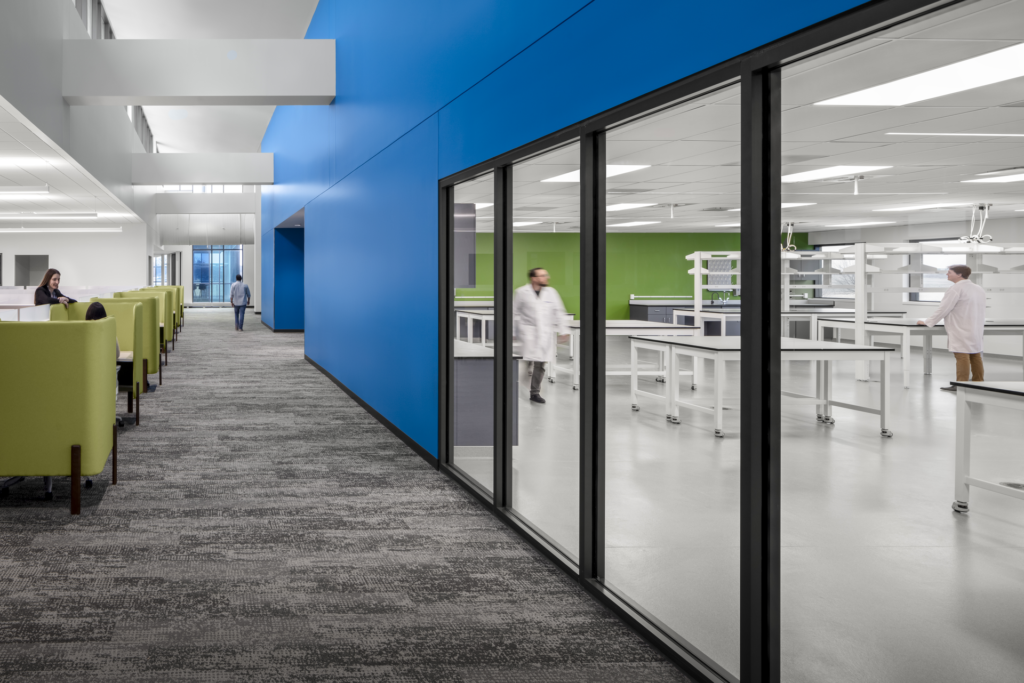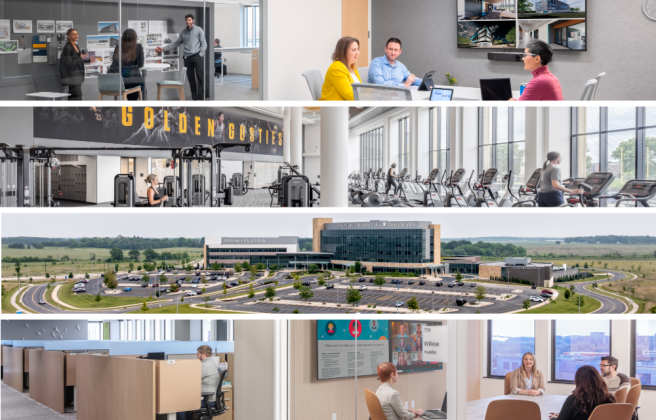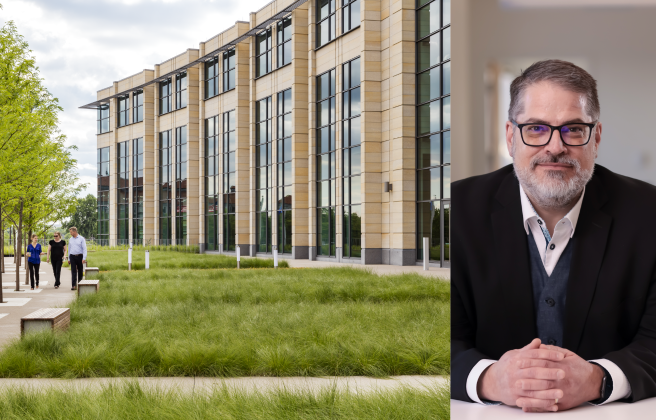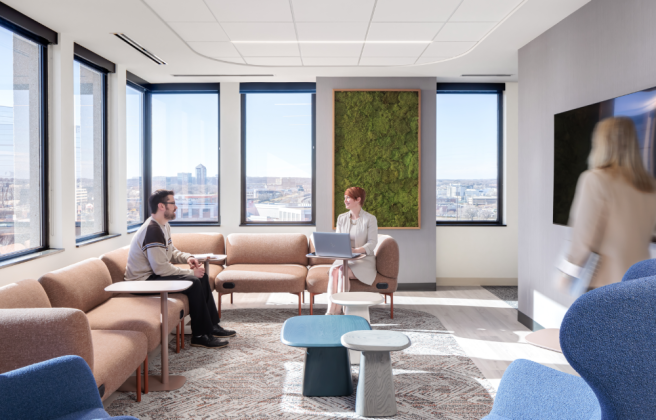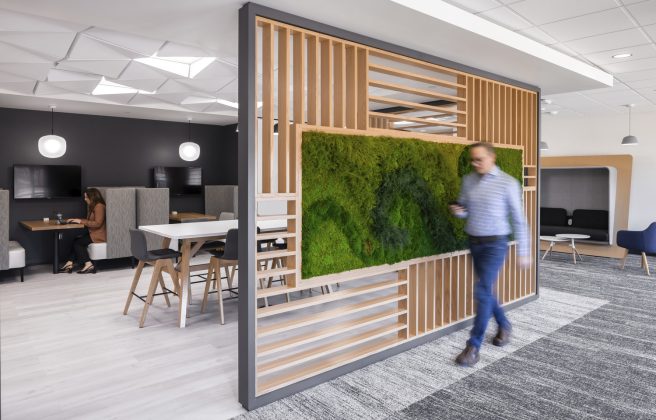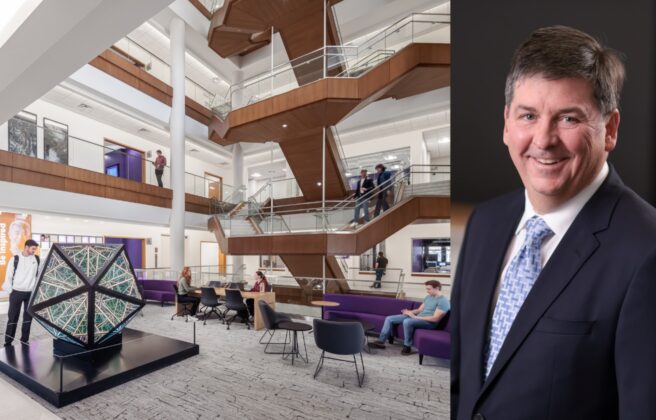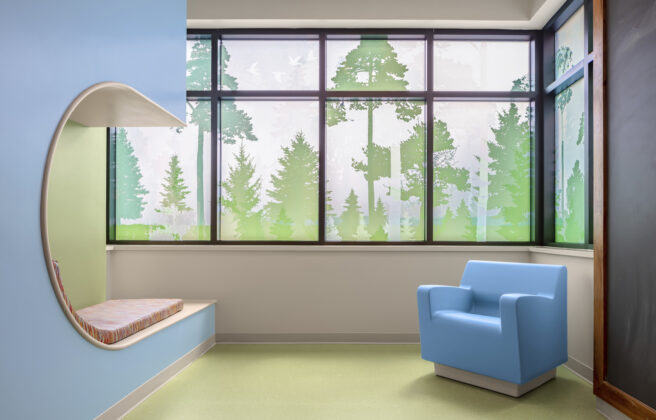As science and technology evolve at rapid speeds, lab design trends are naturally following suit. As part of a presentation about our experiences navigating these developments to the American Water Works Association (AWWA) Laboratory Committee in August 2024, our team surveyed attendees to rank which trends they consider most critical to their operations. After all, if everything is priority, then nothing is, and being able to focus energy and resources where they will most impact your organization is key.
Here’s how the AWWA folks ranked their responses:
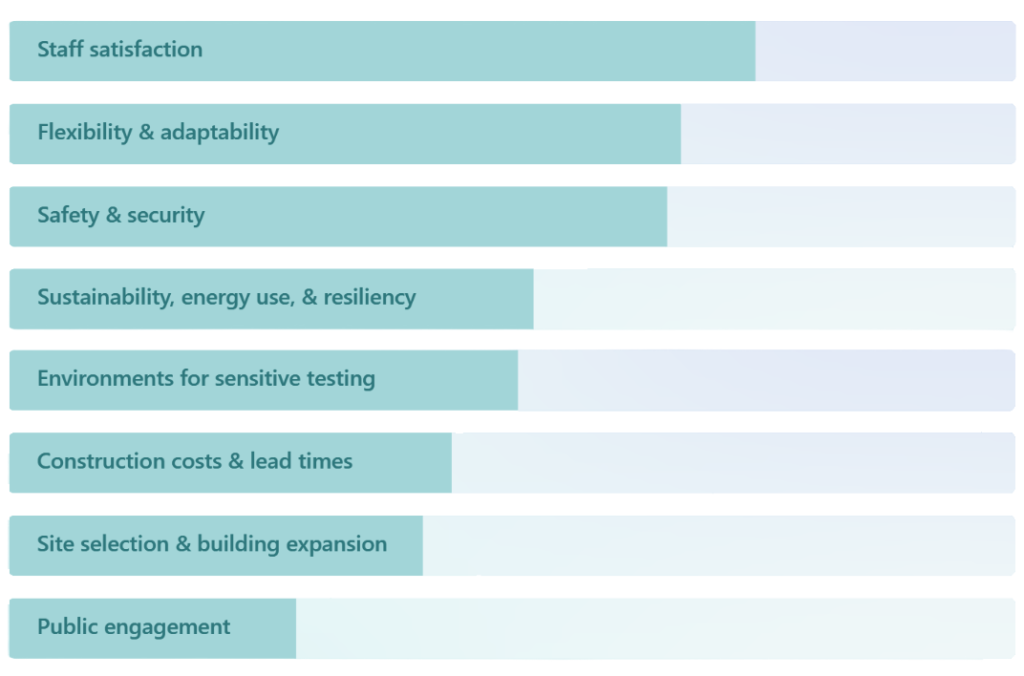
We’ll walk through all eight below, since needs and existing conditions will vary for every lab environment, but we believe every lab can benefit from strategic design.
1. Spaces That Satisfy
With their strict cleanliness and durability requirements, laboratories often have a reputation for being dark, cold, or institutional. Yet, as places where innovation prospers, their design should reflect the inspiring research and development conducted in them.
- Attracting and retaining scientists is a major conversation in both public and corporate laboratories, which requires labs to not only be functional but also visually pleasing, enjoyable workplaces.
- Natural daylight boosts mood, productivity, and wellbeing, and its absence is one of the biggest factors that can decrease satisfaction among employees. Window placement is a critical consideration in the planning process, especially in relation to equipment and storage that require unobstructed wall space.
- Carefully selected finishes like bright paint, wood tones, or patterned floor materials bring warmth while meeting cleaning and durability standards inside a lab space. Visibility between labs and adjacent spaces also allows for design elements that don’t meet laboratory requirements to still impact a lab’s overall feel.
- Ergonomics and personal control matter and should be considered when designing casework, lighting, and HVAC systems.
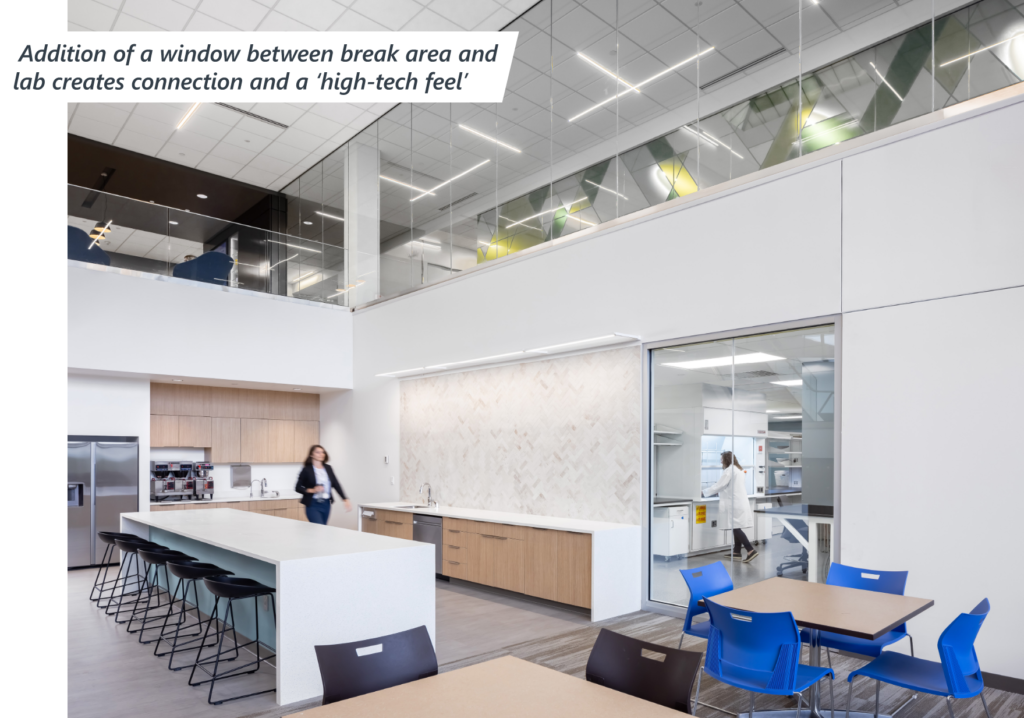
2. Blending Flexible and Fixed
As both budgets and square footage become tighter, every space in a facility needs to do more – labs must be future-proof and quick to respond to changing regulations and processes. Because of this, we’re seeing a trend towards minimizing fixed elements in order to improve adaptability to changes in staff, instrumentation, and operations.
- Typically, a blend of fixed and flexible is the most effective route, with the level of adaptability geared to the processes happening in individual lab spaces.
- Flexible components can also be added to fixed structures, such as adjustable shelving in fixed casework or mobile cabinets underneath fixed countertops.
- Flexibility does come with a cost premium – most often, clients demand a level of flexibility appropriate to the process and set up easy future adaptation without paying for total flexibility on day one.
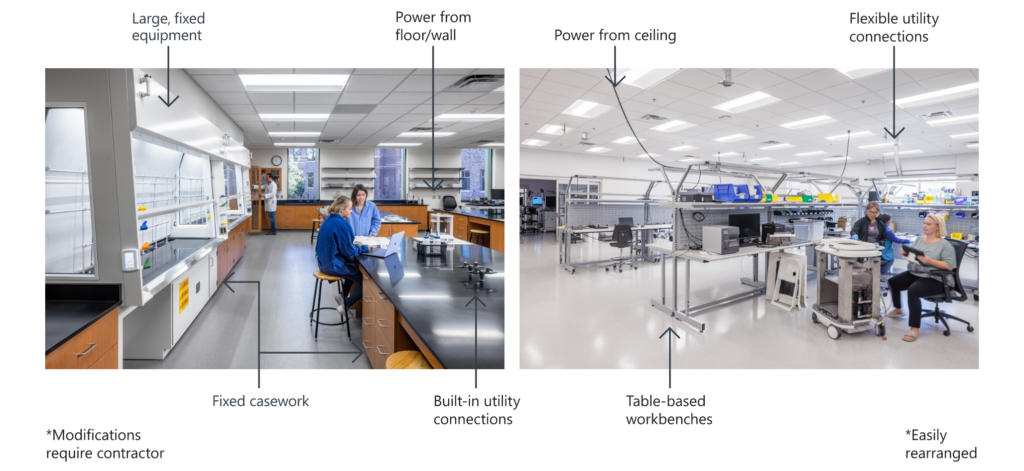
3. Safe and Secure
Lab work can unfortunately become politicized, as we saw during pandemic. Thoughtful security measures have become a necessity to increase staff comfort, protect confidential work, and address threats to physical safety.
- Although guided public access can be a benefit to facilities, lines of security must be delineated and understood by building occupants, as well as law enforcement or security services.
- Levels of badging can vary depending on security needs – in some labs, all staff may be able to access the scientific corridor, while highly secure organizations may prefer to utilize different levels of badging or card readers for each lab area.
- In labs that operate 24/7, staff safety while arriving and leaving late at night should be prioritized through consideration of parking distance, lighting, and sightlines.
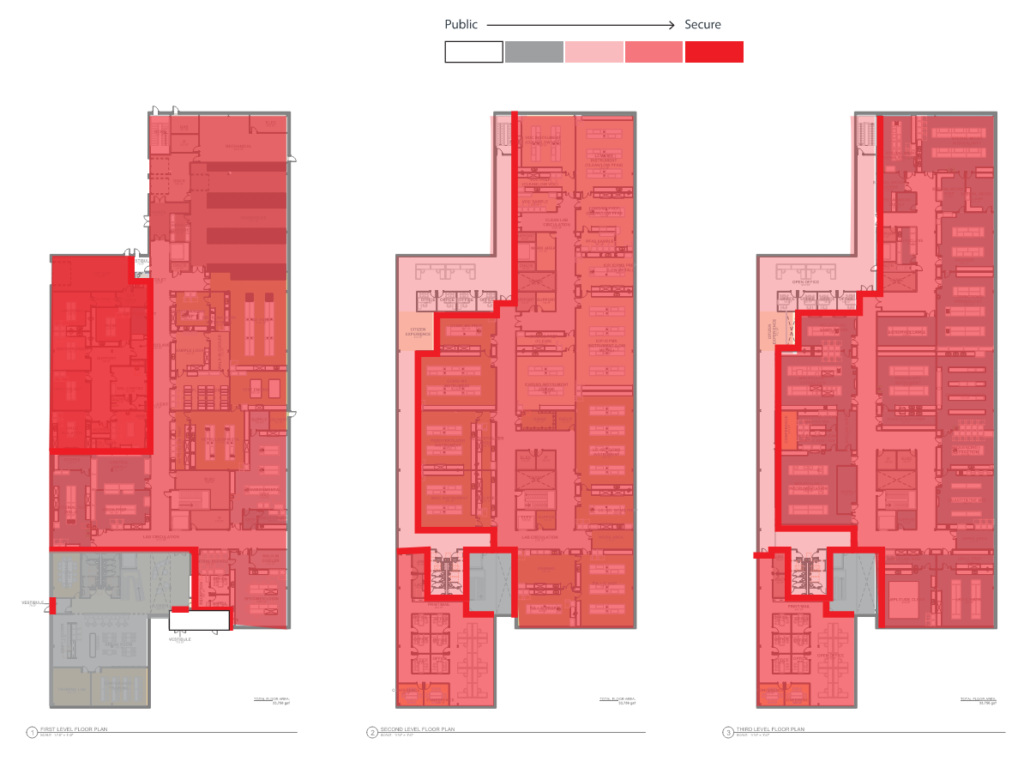
4. Building a Sustainable Future
- As the most expensive spaces to heat and cool, optimizing lab square footage matters. When organizations deeply understand the needs of their facilities, designers can avoid over-conditioning excess square footage.
- Similarly, the more information brought to the table in terms of instrumentation and staff, the better the building’s HVAC system can be optimized. Without a comprehensive equipment list early in the project, engineers will make a conservative estimate, leading to potentially excess spending on unnecessarily large systems and operational inefficiency.
- Capturing and reusing heat generated in the lab is a huge opportunity that can significantly reduce heating loads, especially in cold climates.
- Getting to net-zero energy in a lab environment is difficult, but geothermal and solar systems offer the opportunity to further drive down energy use and electrify energy sources. With systems like these in place, it is possible to drive energy use intensity (EUI) down to approximately 100 kBtu/sf/yr or less, compared to approximately 300-400 kBtu/sf/yr for facilities with traditional mechanical systems.
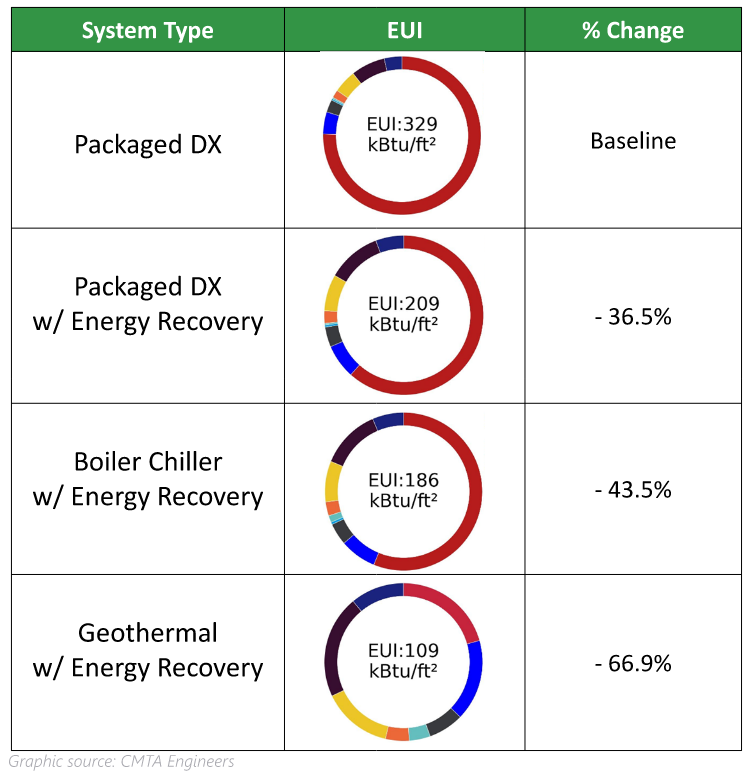
5. Design for Sensitive Environments
Increasingly sensitive testing requires sensitively designed lab environments. Forever chemicals like PFAS/PFOS require extra consideration during the material selection and construction process to reduce contaminants in sensitive environments.
- As instrumentation improves, testing processes can detect contamination levels in the parts-per-trillion range. Setting up clean lab suites for these kinds of sensitive instruments has become vital, as even minimal background contamination can lead to inaccurate testing.
- Unidirectional workflows, separation of clean and dirty processes, and dedicated spaces for sensitive instrumentation are becoming more common to address this.
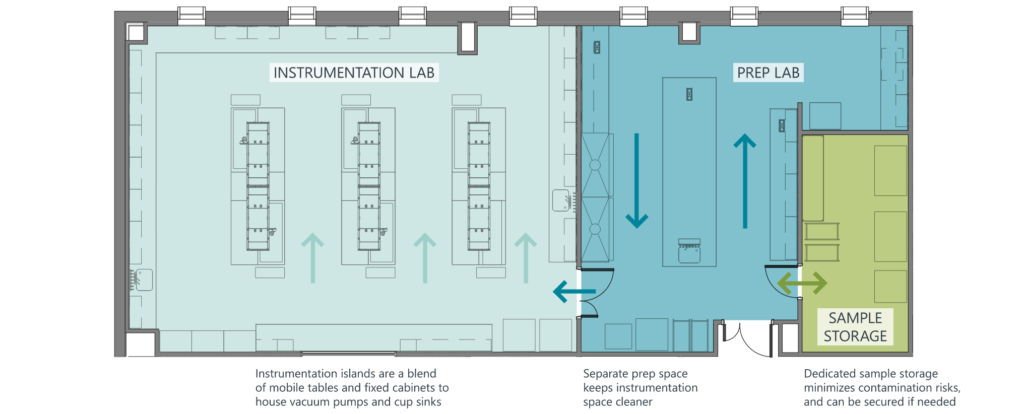
6. Doing More With Less
It’s no surprise that construction costs are rising rapidly – a laboratory project might be 50-75% more expensive today than a similar project pre-COVID due to workforce shortages and increasing labor, raw material, and transportation costs.
- Although design teams can consider construction types, MEP systems, and interior finishes with a variety of price points, optimizing a building’s footprint is the most effective cost-control method available.
Optimization requires an early understanding of space program, workflows, adjacencies, and instrumentation needs, to give the design team and client confidence the space allocated will meet functional needs.
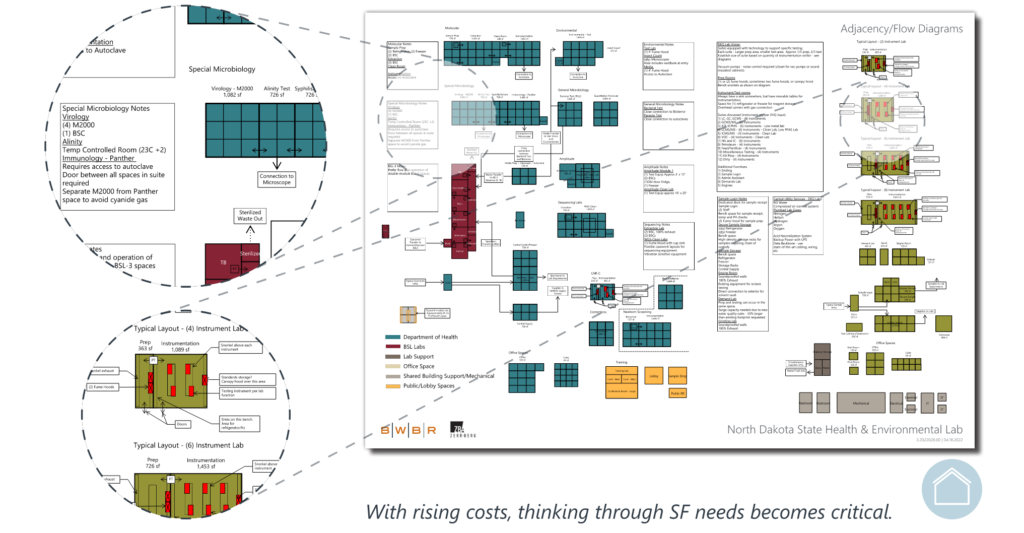
7. Selecting a Site
Selecting a location for a new laboratory facility can go beyond practicalities such as infrastructure and zoning, bringing new possibilities for enhanced operations now and in the future.
- Clients are seeing site selection conversations as opportunities to improve collaboration with other agencies and departments, as well as better access shared resources.
- Because lab buildings are typically expected to have a long lifespan, site planning for expansions and program co-location minimizes disruptions down the line.
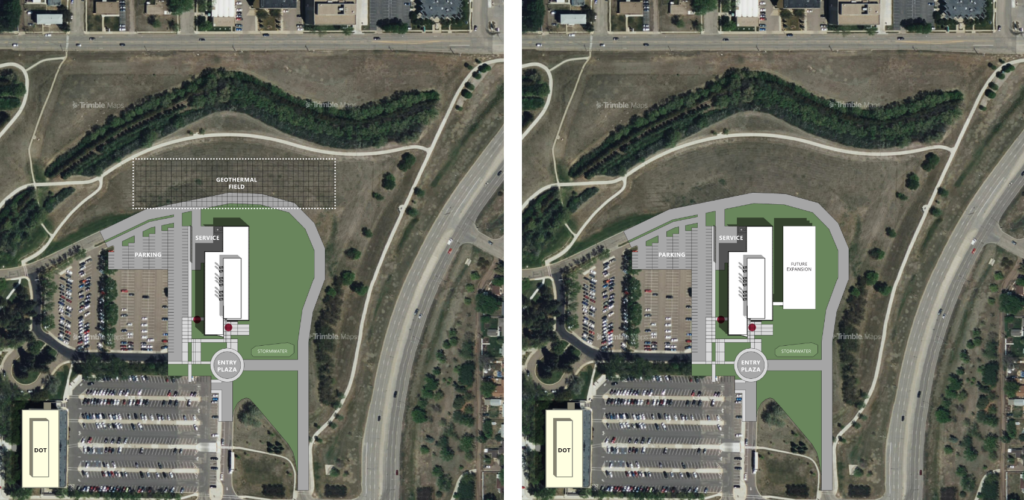
8. Engaging the Public
- Many clients are seeing the advantages of more prominent, public-facing sites, rather than hiding labs away in industrial parks.
- Allowing public access requires facilities to be designed for a range of visitors, from an elementary school field trip to community tours.
- Circulation systems must be carefully planned to avoid guests interrupting or contaminating laboratory processes.
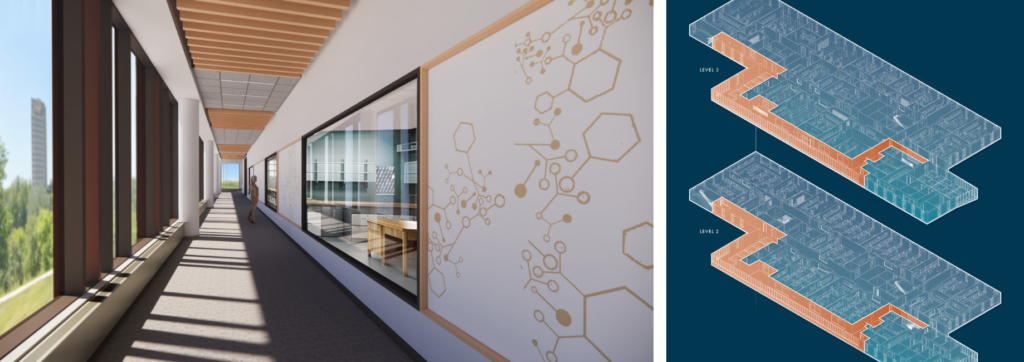
As the industry continues to see fast-paced change, organizations are seeking facilities that not only support cutting-edge research but also foster a positive, resilient, and energy-efficient environment. By equipping companies with the right tools, customized to meet the challenges and opportunities of the future, innovation can remain at the forefront.

